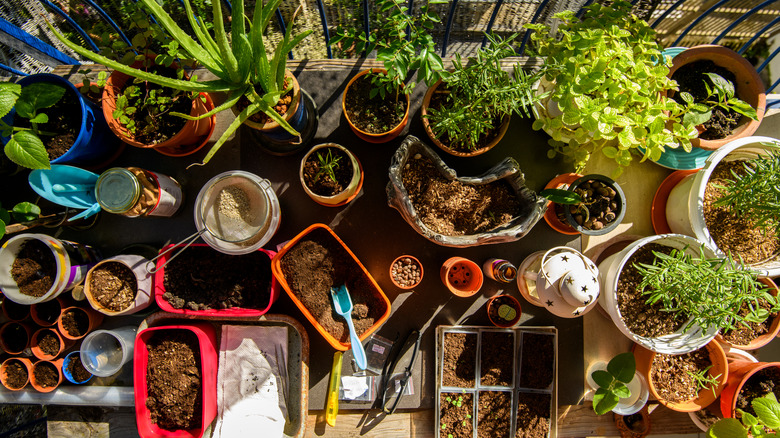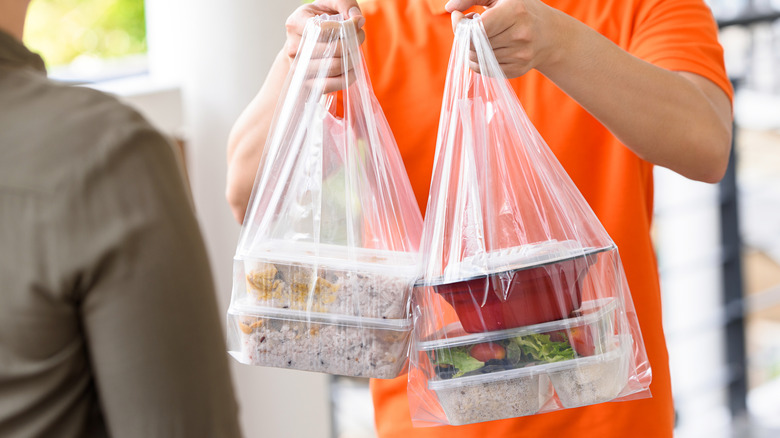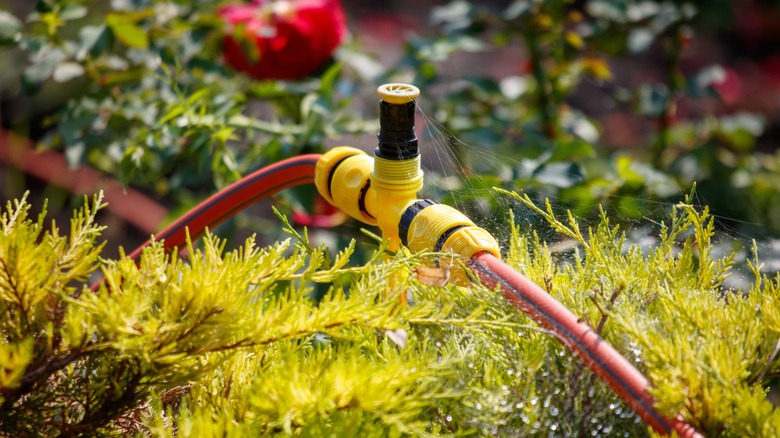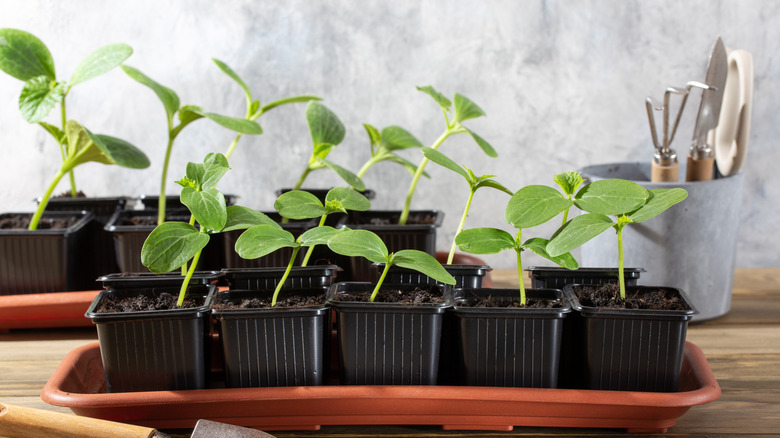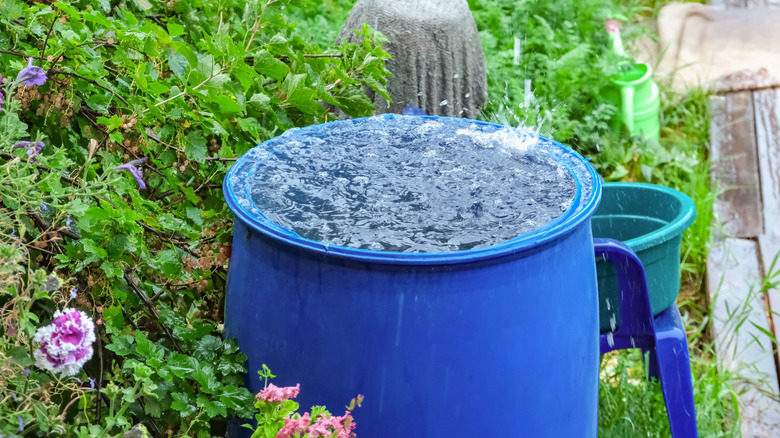Not All Plastic Is Equal In Gardening. Here's The Scoop On Which Plastics To Avoid
It starts with good intentions and a yogurt tub–or maybe a takeout container. Either way, it's a perfectly decent vessel. So, why not give it a second life as a tomato nursery? It feels eco-savvy. Frugal. The gardening equivalent of a clever thrift find. But here's the rub: some plastics don't play nice with sun, soil, or your dinner plate.
As container gardening grows in popularity, so does the temptation to repurpose whatever's on hand. And while reusing plastic can be a smart choice, it's not risk-free. When exposed to ultraviolet radiation (UV) rays and heat, certain plastics start to break down, leaching unwanted chemicals like antimony, phthalates, or BPA into the soil. These compounds can hitch a ride into your produce or linger in the environment far longer than your spinach ever will.
Here's where that little triangle on the bottom of your pot comes in: resin codes. In addition to conveying information to recyclers, they're also your best shot at knowing which containers are safe and which ones could turn toxic over time. Generally speaking, plastic containers with resin codes 1, 3, 6, and 7 should be kept out of the garden. If you're unsure where your planters fall on the safety spectrum, you'll want to learn how to select the best option for your garden by thinking from the ground up (so to speak).
When 'safe for food' doesn't mean safe for plants
One of the biggest misconceptions about garden plastic use is the idea that "food-safe" equals "garden-safe." If it once held peanut butter or bottled water, surely it's fine for your basil, right? Not always. Take PET plastic (resin code #1). It's often used for soda bottles and clear containers. Under kitchen conditions, it behaves itself. But toss it outside in full sun? That's where the problems start.
PET degrades when exposed to high temperatures or UV rays, and studies have found that it can leach antimony, a heavy metal used in production, into water stored in those conditions. Even organic byproducts, like acetaldehyde, can sneak out, especially if the container sits in the sun for days on end. That sunny garden bench becomes a slow cooker for chemical migration. This situation is especially dangerous for water-heavy crops like lettuce or herbs.
So, while PET might be fine short-term—like for seed-starting domes or single-use irrigation spikes—it shouldn't be your go-to for long-term garden containers. If it's sitting in full sun or getting daily water exposure, consider safer alternatives. This is where understanding the conditions of use matters more than the label itself. Thus, container choices should be both bespoke and deliberate if you want to avoid the biggest mistakes when making your container garden.
Plastics to keep out of your garden
When it comes to gardening, some plastics deserve the side-eye. Resin codes #3 (PVC), #6 (polystyrene), and #7 (miscellaneous or mixed types) all raise serious concerns, especially under heat, sunlight, or prolonged use.
PVC (#3) is a common culprit in hoses, pots, and clear garden films. What keeps it flexible are plasticizers, such as phthalates, which aren't tightly bound to the plastic. In a 2016 study by the Ecology Center, researchers found phthalates in 75% of the PVC garden hoses they tested, noting that the leaching of these plastic additives into water significantly increases alongside rising temperatures. Polystyrene (#6) has its own issues. Common in seed trays and nursery pots, it can release styrene, a potential human carcinogen, when exposed to heat or UV. And then there's code #7, the plastic equivalent of a mystery bag. It often contains BPA or other unlisted additives, making its risks hard to predict.
If you've already reused some questionable containers, don't panic, but do reassess. Not all plastics are worth the gamble. If you're interested in safer, smarter reuse, this guide offers clever ways to reuse your plastic containers in your home and garden without sabotaging your soil.
Plastics that hold up in the garden
While some plastics are best left off your garden shopping list, others hold up well under the pressure of sun, water, and soil. If you see resin codes #2 (HDPE), #4 (LDPE), or #5 (PP) on the bottom of a container, you're in safer territory.
HDPE, often used in milk jugs, nursery pots, and food-grade buckets, is chemically stable — even holding up in high temperatures. LDPE, commonly found in soft squeeze bottles and drip irrigation tubing, performs well outdoors; however, it may break down faster under UV exposure. Polypropylene (PP), known for its toughness and UV resistance, is a favorite in many long-lasting grow bags and vertical planters. All three are relatively inert, making them suitable for edible gardens when properly maintained.
That said, even safe plastics degrade eventually. Look for signs like brittleness, cracking, or sun-bleaching. And if you're ready to swap in something new, consider the many benefits of growing a container garden, especially when you're working with materials built to last, not leach.
Smart plastics use in your garden
The simplest trick in garden plastic safety? Flip it over. If your container has a resin code stamped into its base, you're one step closer to making a smarter choice. Numbers 2, 4, and 5 are generally safe bets. No number? No thanks. It's often a sign of unknown composition. Or worse, the numeric absence may be masking a known risk.
If you're ready to ditch the mystery plastics, opt for food-grade buckets, polypropylene fabric grow bags, or reused nursery pots clearly labeled with safe codes. Looking to avoid plastic altogether? Terracotta, glazed ceramic, and galvanized metal are sturdy, reliable alternatives. Of course, if you go this route, you'll want to account for weight and drainage quirks. For raised beds, keep in mind that plastic linings may break down under sun exposure. Learn more about the pros and cons of plastic sheeting in garden beds before deciding.
In the end, gardening responsibly doesn't necessarily mean eliminating plastics completely. Like it or not, plastic has become an unavoidable part of modern life. Giving a second life to sturdy, reusable containers for cultivating food and flowers is far preferable to immediately recycling them—or worse, tossing them in the landfill. Understanding what your containers are made from and how they break down over time empowers you to make informed decisions that benefit your plants, your health, and the environment. After all, when gardening with plastics, it's the invisible leaching we must pay the most attention to.
